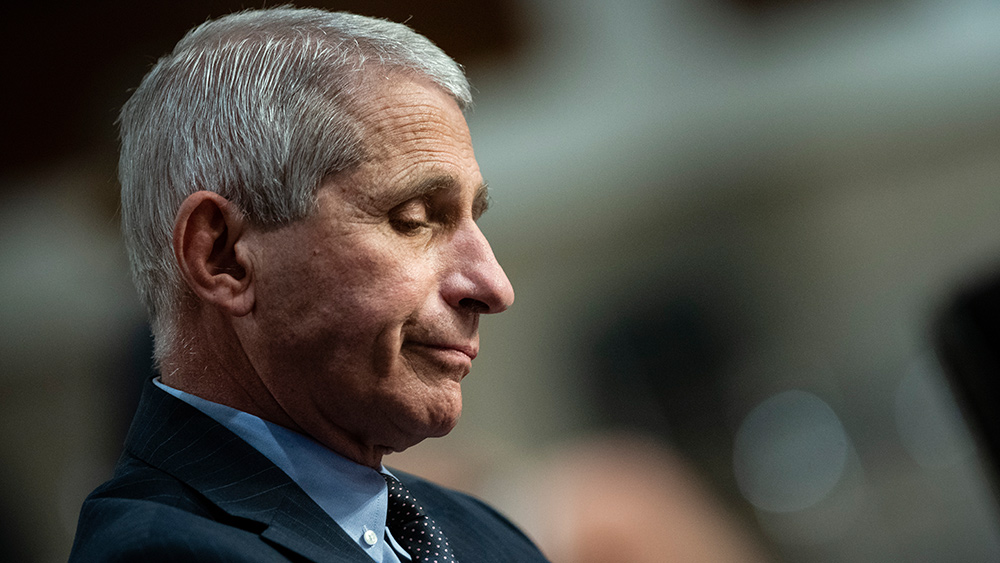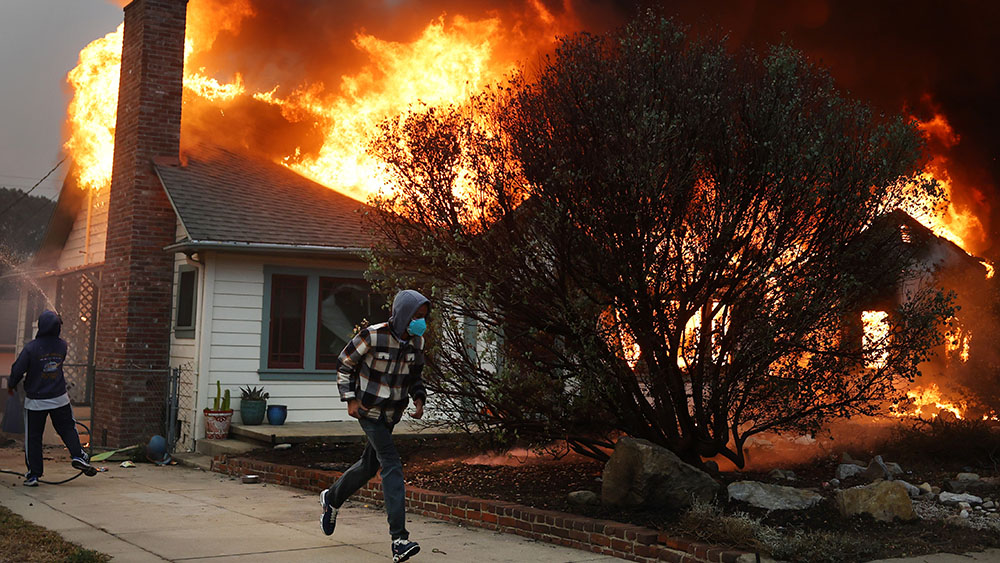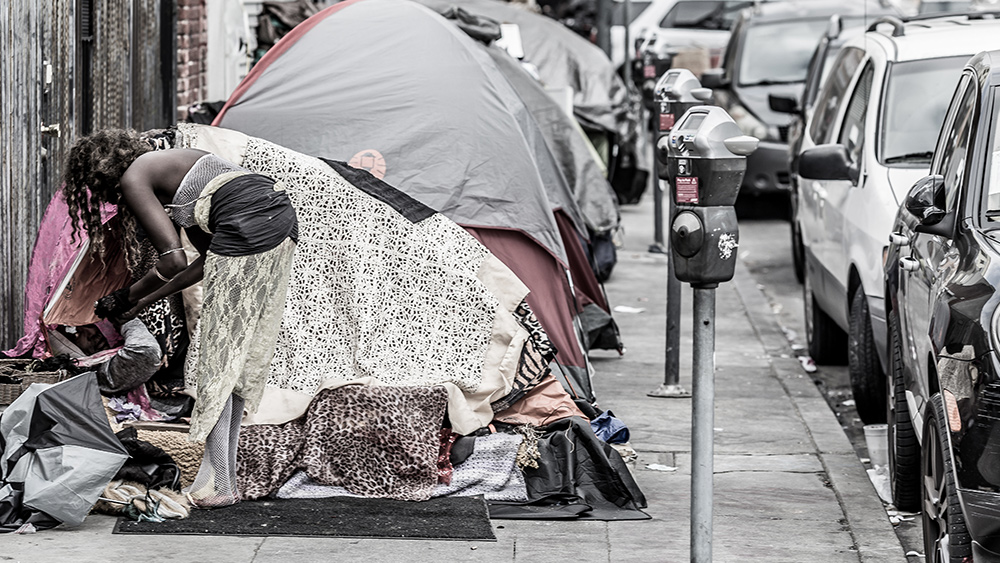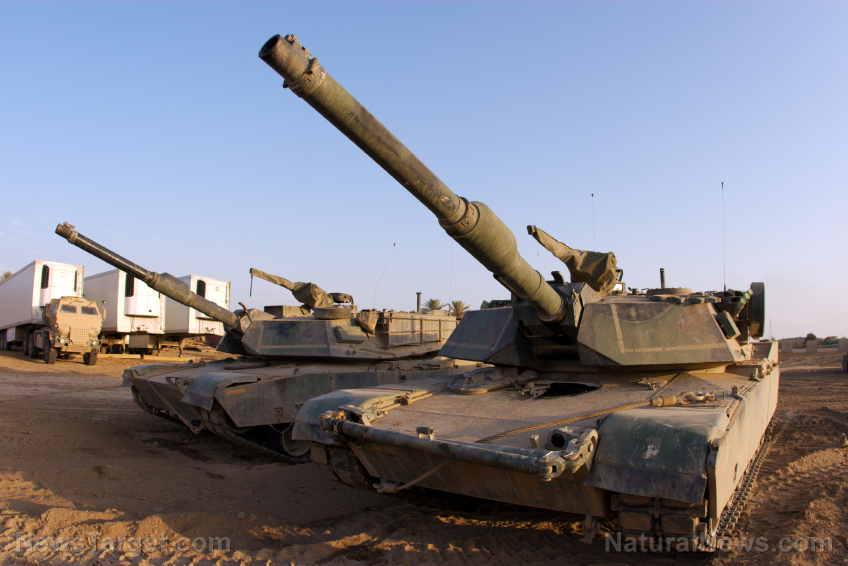 Parler
Parler Gab
Gab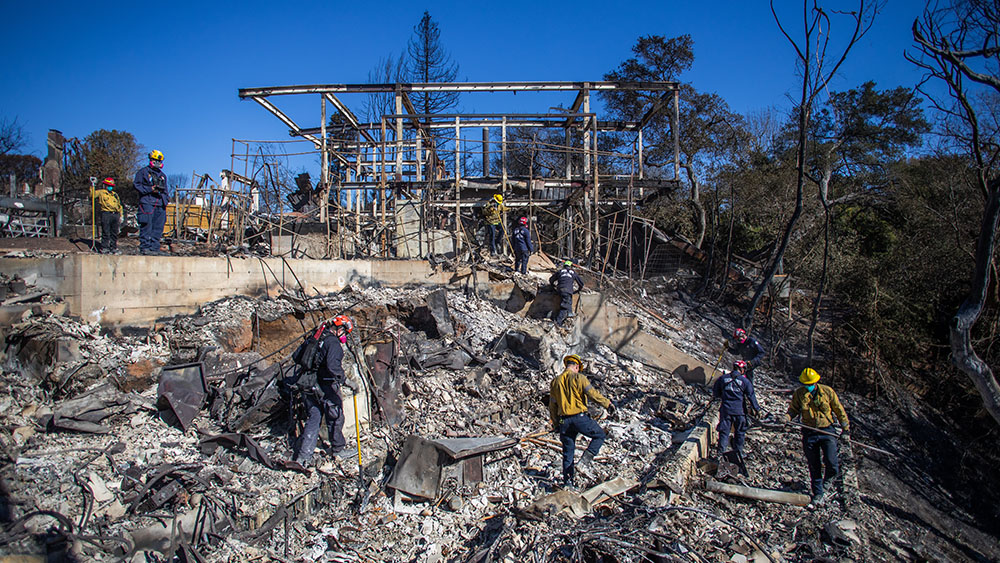
- Residents of fire-ravaged Los Angeles neighborhoods, particularly Altadena, fear a government-led land grab that could replace single-family zoning with high-density apartment complexes under the "LA 2.0" initiative.
- The wildfires have claimed at least 24 lives and destroyed over 12,000 structures, displacing thousands and leveling entire communities, leading to discussions about rebuilding and potential urban transformation.
- The draining of the Palisades reservoir before the fires has fueled conspiracy theories and deepened mistrust among residents, with some questioning whether the devastation was an accident or a calculated move.
- Plans for rebuilding include rezoning fire-ravaged areas for high-density housing and "smart cities," raising concerns about community displacement and the prioritization of developers' and government agendas.
- The fires have erased significant pieces of California’s cultural heritage, including historic homes and landmarks, highlighting the broader stakes in the rebuilding debate over preserving community character versus urban transformation.
A reservoir of suspicion
The fires, fueled by high Santa Ana winds, have sparked more than just flames—they’ve ignited conspiracy theories and deep-seated mistrust. One key point of contention is the Palisades reservoir, which was reportedly drained before the fires began. Homeowners in the area have filed a lawsuit against the city’s electric and water utility, alleging that the lack of water pressure in fire hydrants hindered firefighting efforts. "Incompetence in the limit is indistinguishable from sabotage," Elon Musk wrote on X, capturing the skepticism swirling around the disaster. While the cause of the fires remains officially undetermined, the drained reservoir has become a focal point for those questioning whether the devastation was a tragic accident—or something more calculated.The push for "LA 2.0"
Amid the chaos, some officials are already framing the disaster as an opportunity to reimagine Los Angeles. Proposals for "LA 2.0" include rezoning fire-ravaged areas to accommodate high-density housing and so-called "smart cities." Critics argue that these plans align with a broader agenda to reshape urban landscapes, often at the expense of existing communities. "Tell me this was a planned demolition without telling me this was a planned demolition," one X user quipped, reflecting a growing suspicion that the fires are being used as a pretext for sweeping changes. Historically, disasters have often served as catalysts for urban transformation. After the 1906 San Francisco earthquake, for example, the city was rebuilt with a focus on modernization, but at the cost of displacing many working-class residents. Today, some fear a similar dynamic could play out in Altadena and other affected areas, with middle-class families pushed out to make way for high-density developments.A cultural and architectural tragedy
Beyond the political and economic implications, the fires have also erased irreplaceable pieces of California’s cultural heritage. Among the losses is the 1887 Andrew McNally House, a Queen Anne-style mansion that stood as a testament to Altadena’s Gilded Age charm. The Zane Grey Estate, a Mission Revival landmark once considered fireproof, also fell to the flames. These homes were more than just structures—they were living archives of California’s history. Their destruction underscores the broader stakes of the rebuilding debate: not just who gets to live in these neighborhoods, but what kind of communities will emerge from the ashes.A reckoning for California
The wildfires have laid bare the fragility of California’s housing market and the deep inequities that define it. For some, the disaster is a breaking point, accelerating an exodus of middle-class families to states like Texas and Florida. For others, it’s an opportunity to invest in fire-resistant properties or capitalize on discounted land. But for the residents of Altadena and other affected areas, the future remains uncertain. Will they be able to rebuild their homes and communities, or will they be pushed aside in the rush to create "LA 2.0"? As the flames continue to burn, one thing is clear: the fires have ignited more than just land—they’ve sparked a battle over the soul of California. And in a state already grappling with housing shortages, climate change, and political polarization, the stakes couldn’t be higher. Sources include: ZeroHedge.com X.com LALoftBlog.comBiden grants controversial blanket PARDONS to Fauci, Milley and Jan. 6 Committee members
By Belle Carter // Share
Climate change fanatics want to bankrupt the entire world for little to no reward
By News Editors // Share
Outrage as WOKE BISHOP weaponizes pulpit to attack Trump
By Willow Tohi // Share
Washington Democrats pass a bill to legalize homeless encampments on public property
By Laura Harris // Share
Governments continue to obscure COVID-19 vaccine data amid rising concerns over excess deaths
By patricklewis // Share
Tech giant Microsoft backs EXTINCTION with its support of carbon capture programs
By ramontomeydw // Share
Germany to resume arms exports to Israel despite repeated ceasefire violations
By isabelle // Share
